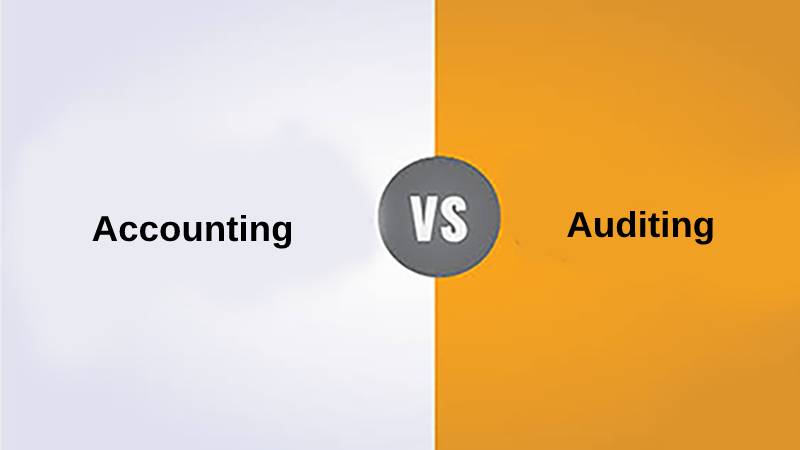Accounting and taxable profit are essential financial concepts used in different contexts, primarily for financial reporting and taxation purposes. While both terms relate to a company’s financial performance, they have distinct definitions, calculations, and implications. In this comprehensive guide, we will explore the key differences between accounting profit and taxable profit, including their definitions, components, calculation methods, and the impact they have on a business’s financial management and tax obligations.
Accounting Profit
Definition and Purpose
Accounting profit, also known as book or financial profit, measures a company’s profitability based on its financial statements, such as the income statement and balance sheet. It represents the surplus of revenues over expenses as reported by accepted accounting principles (GAAP) or International Financial Reporting Standards (IFRS). Accounting profit provides a comprehensive view of a company’s financial performance for management, investors, and other stakeholders.
Components
Accounting profit consists of the following components:
Revenue:
- Accounting profit includes all revenues the company earns, such as sales, interest, and other operating income.
Expenses:
- It subtracts all expenses incurred by the company during the accounting period, including the cost of goods sold, operating expenses, interest expenses, and taxes.
Non-Operating Items:
- Accounting profit may include non-operating items, such as gains or losses from the sale of assets or investments.
Calculation
Accounting profit is calculated using the following formula:
mathematicaCopy code
Accounting Profit = Total Revenue - Total Expenses
This calculation provides an overview of a company’s financial performance without considering tax implications.
Application
Accounting profit is primarily used for internal financial reporting and external financial statements, including income statements and annual reports. It helps businesses assess their financial health, make informed management decisions, attract investors, and comply with accounting standards. Accounting profit provides insights into a company’s core operations and profitability, enabling stakeholders to analyze its financial performance over time.
Taxable Profit
Definition and Purpose
Taxable profit, referred to as taxable income, is the portion of a company’s earnings subject to taxation by government authorities. The profit amount serves as the basis for calculating income tax liabilities. Taxable profit considers specific tax laws, regulations, and deductions tax authorities allow, and it may differ significantly from accounting profit. The primary purpose of taxable profit is to determine the income tax liability of a business, ensuring compliance with tax laws.
Components
Taxable profit includes the following components:
Revenue:
- Like accounting profit, taxable profit incorporates all taxable revenues, including sales income, interest income, and other income sources.
Deductions:
- Taxable profit allows for various deductions specified in tax codes, such as business expenses, depreciation, amortization, and tax credits.
Taxable Events:
- It includes income or deductions related to specific taxable events, such as capital gains, stock options, and dividends, as specified by tax laws.
Calculation
Taxable profit is calculated based on tax regulations and laws applicable in a specific jurisdiction. The calculation involves the following steps:
- Start with accounting profit, which serves as the initial reference point.
- Apply relevant tax rules and regulations to determine which items from accounting profit are taxable and which deductions are allowable.
- Subtract allowable deductions from accounting profit to arrive at taxable profit.
- Apply the applicable tax rate to taxable profit to calculate the income tax liability.
The specific calculation can vary widely based on local tax laws and regulations, including any tax incentives or credits available to the business.

Application
Taxable profit is crucial for tax compliance and reporting. It is used by businesses to determine their tax liabilities, make estimated tax payments, and report income to tax authorities accurately. Additionally, it plays a central role in financial planning, as businesses need to set aside funds for tax payments and understand the impact of tax expenses on their profitability.
Key Differences Between Accounting Profit and Taxable Profit
Definition and Purpose
| Aspect | Accounting Profit | Taxable Profit |
|---|---|---|
| Definition | Measures a company’s financial performance based on GAAP or IFRS. | Represents the portion of earnings subject to taxation according to tax laws. |
| Purpose | Provides a comprehensive view of financial performance for stakeholders. | Determines the income tax liability of a business. |
| Focus | Focuses on financial reporting and analysis. | Focuses on tax compliance and income tax calculation. |
Components and Calculation
| Aspect | Accounting Profit | Taxable Profit |
|---|---|---|
| Components | Includes total revenue, expenses, and non-operating items. | Includes taxable revenue, allowable deductions, and taxable events. |
| Calculation | Calculated as total revenue minus total expenses. | Calculated based on tax rules, allowable deductions, and taxable events. |
Application and Reporting
| Aspect | Accounting Profit | Taxable Profit |
|---|---|---|
| Usage | Used for internal and external financial reporting and analysis. | Used for tax compliance, tax planning, and calculating income tax liabilities. |
| Reporting | Reported in financial statements, income statements, and annual reports. | Reported to tax authorities in tax returns and used for tax planning. |
| Impact on Business | Helps assess financial health, attract investors, and make management decisions. | Determines tax liabilities, affects cash flow, and guides tax strategies. |
Impact on Financial Management
The distinctions between accounting profit and taxable profit have significant implications for a business’s financial management:
- Tax Planning: Understanding the differences allows businesses to engage in tax planning, optimising deductions and credits to minimize tax liabilities while remaining compliant with tax laws.
- Cash Flow: Taxable profit directly affects cash flow, as businesses must set aside funds to cover their tax obligations. Accounting profit, on the other hand, does not have an immediate impact on cash flow.
- Financial Decision-Making: Accounting profit influences internal financial decisions and attracts investors. Taxable profit considerations guide tax strategies, deductions, and compliance decisions.
- Income Tax Provisions: Companies must make income tax provisions based on their taxable profit, ensuring they are financially prepared to meet their tax obligations.
- Regulatory Compliance: Accurate reporting of taxable profit is essential for regulatory compliance and avoiding potential legal and financial consequences.

Conclusion
Accounting profit and taxable profit serve different purposes in financial management and reporting. Accounting profit is a measure of financial performance based on GAAP or IFRS and is used for internal and external financial analysis. In contrast, taxable profit is the portion of earnings subject to taxation as per tax laws and regulations, and it is primarily used for tax compliance and planning.
Recognizing the distinctions between these two types of profit is crucial for businesses to manage their financial affairs effectively, ensure tax compliance, make informed financial decisions, and optimize their tax positions. Accounting and taxable profit are vital in assessing and managing a company’s financial health and obligations.












